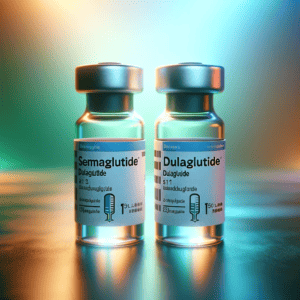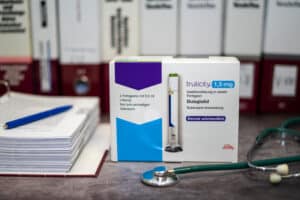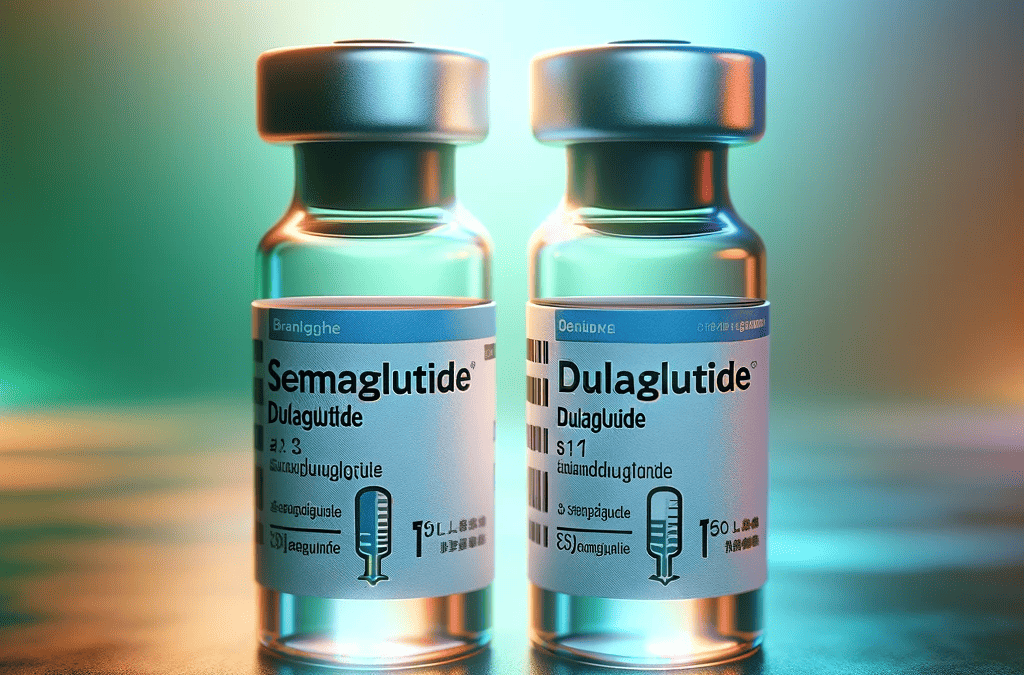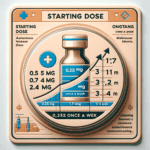
Which is Better – Semaglutide or Dulaglutide?
Are Semaglutide And Dulaglutide The Same? GLP-1 receptor agonists are a class of medications used in the treatment of type 2 diabetes. They work by mimicking the effects of glucagon-like peptide-1 (GLP-1), a hormone that helps regulate blood sugar levels. Two commonly prescribed GLP-1 receptor agonists are Semaglutide and Dulaglutide.
Semaglutide is a once-weekly injectable medication that was approved by the FDA in 2017. It is a long-acting GLP-1 receptor agonist that helps lower blood sugar levels by increasing insulin secretion, reducing glucagon secretion, and slowing down gastric emptying. It has also been shown to promote weight loss.
Dulaglutide, on the other hand, is also a once-weekly injectable medication that was approved by the FDA in 2014. It works in a similar way to Semaglutide, by increasing insulin secretion, reducing glucagon secretion, and slowing down gastric emptying. Dulaglutide has also been shown to promote weight loss.
Mechanisms of Action of Semaglutide and Dulaglutide
Semaglutide and Dulaglutide both work by activating the GLP-1 receptor in the body. When the GLP-1 receptor is activated, it stimulates the release of insulin from the pancreas, which helps lower blood sugar levels. It also reduces the release of glucagon, a hormone that raises blood sugar levels. Additionally, GLP-1 receptor activation slows down gastric emptying, which can help regulate blood sugar levels after meals.
While both medications have similar mechanisms of action, there are some differences between Semaglutide and Dulaglutide. For example, Semaglutide has a longer half-life than Dulaglutide, which means it stays in the body for a longer period of time. This allows for once-weekly dosing of Semaglutide, compared to once-weekly dosing of Dulaglutide. Additionally, Semaglutide has been shown to have a greater effect on weight loss compared to Dulaglutide.
Clinical Trials and Efficacy
Clinical trials have shown that both Semaglutide and Dulaglutide are effective in lowering blood sugar levels and promoting weight loss in patients with type 2 diabetes. In a study comparing Semaglutide to Dulaglutide, Semaglutide was found to be more effective in reducing HbA1c levels (a measure of long-term blood sugar control) and promoting weight loss.
In another study, Semaglutide was shown to reduce the risk of major cardiovascular events, such as heart attack and stroke, in patients with type 2 diabetes who were at high risk for cardiovascular disease. Dulaglutide has also been shown to reduce the risk of cardiovascular events in patients with type 2 diabetes.
Safety Profiles of These GLP-1 Agonists
Both Semaglutide and Dulaglutide have similar safety profiles, with the most common side effects being gastrointestinal in nature. These can include nausea, vomiting, diarrhea, and constipation. However, these side effects are usually mild and tend to improve over time.
Less common but more serious side effects can include pancreatitis (inflammation of the pancreas), thyroid tumors, and allergic reactions. It is important for patients to be aware of these potential side effects and to report any unusual symptoms to their healthcare provider.
Dosage and Administration of These Medications

Are Semaglutide And Dulaglutide The Same?
The recommended starting dose of Semaglutide is 0.25 mg once weekly, which can be increased to 0.5 mg once weekly after four weeks if needed. The maximum recommended dose is 1 mg once weekly. Semaglutide is available as a pre-filled pen that is injected subcutaneously (under the skin) in the abdomen, thigh, or upper arm.
Dulaglutide is available in two strengths: 0.75 mg and 1.5 mg. The recommended starting dose is 0.75 mg once weekly, which can be increased to 1.5 mg once weekly after four weeks if needed. Dulaglutide is also available as a pre-filled pen that is injected subcutaneously in the abdomen, thigh, or upper arm.
Cost Comparison
The cost of Semaglutide and Dulaglutide can vary depending on factors such as insurance coverage and pharmacy discounts. However, in general, Semaglutide tends to be more expensive than Dulaglutide. It is important for patients to check with their insurance provider to determine coverage and out-of-pocket costs for both medications.
Side Effects of Semaglutide and Dulaglutide
Are semaglutide and dulaglutide the same? Both Semaglutide and Dulaglutide can cause gastrointestinal side effects such as nausea, vomiting, diarrhea, and constipation. These side effects are usually mild and tend to improve over time. Less common but more serious side effects can include pancreatitis, thyroid tumors, and allergic reactions.
In clinical trials, the frequency and severity of side effects were similar between Semaglutide and Dulaglutide. However, it is important for patients to be aware of the potential side effects and to report any unusual symptoms to their healthcare provider.
Patient Preference and Adherence
There are several factors that may influence patient preference for one medication over the other. These can include factors such as dosing frequency, administration method, and cost. Some patients may prefer the convenience of once-weekly dosing with Semaglutide, while others may prefer the lower cost of Dulaglutide.
Patient adherence to treatment is also an important factor to consider. Studies have shown that patients who are adherent to their diabetes medications have better blood sugar control and lower rates of complications. Therefore, it is important for healthcare providers to discuss the benefits and potential side effects of both Semaglutide and Dulaglutide with their patients to help them make an informed decision.
Comparison of with Other GLP-1 Receptor Agonists
There are several other GLP-1 receptor agonists available on the market, including Liraglutide, Exenatide, and Albiglutide. Each medication has its own advantages and disadvantages.
For example, Liraglutide is another once-daily injectable medication that has been shown to be effective in lowering blood sugar levels and promoting weight loss. Exenatide is available as a twice-daily injectable medication or as a once-weekly extended-release formulation. Albiglutide is a once-weekly injectable medication that has been shown to be effective in lowering blood sugar levels, but it may not be as effective in promoting weight loss compared to other GLP-1 receptor agonists.
Conclusion: Are Semaglutide And Dulaglutide The Same?
In conclusion, both Semaglutide and Dulaglutide are effective medications for the treatment of type 2 diabetes. They have similar mechanisms of action and safety profiles, but there are some differences between the two medications.
Semaglutide has been shown to be more effective in lowering blood sugar levels and promoting weight loss compared to Dulaglutide. However, Dulaglutide may be more cost-effective for some patients. Ultimately, the choice between Semaglutide and Dulaglutide should be based on individual patient factors, such as dosing frequency, administration method, cost, and patient preference.
It is important for patients to discuss their options with their healthcare provider to determine which medication is best for them.






